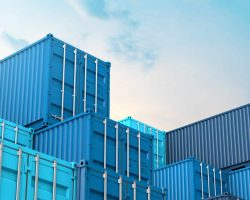 |
In spite of the continuing Coronavirus pandemic, ports across Canada are maintaining their focus on long term infrastructure development. Despite the world economy suffering from last year’s recession, the ongoing resurgence of Coronavirus infections and the slower-than-expected rollout of vaccinations, port authorities are pressing ahead with projects that will ensure future prosperity and trade opportunities.
At Vancouver, Canada’s biggest port, work on some key infrastructure projects under the Greater Vancouver Gateway 2030 strategy are moving ahead this year. Topping the list is the Centerm Expansion and South Shore Access project, which is to be completed in 2022. It will help meet an expected near-term spike in demand for containers shipped through the port. In nearby Prince Rupert, already operating at around 90 percent capacity – helping make it Canada’s third busiest port by container volume and cargo tonnage behind Montreal and Vancouver – the terminal is being expanded to raise storage to 1.6 million TEUs. Work is already underway and should be completed late this year.
In Montreal the port got a major boost in early January when the Quebec government announced it was providing $55 million in funding to the Contrecoeur container terminal. Final federal approval for the nearly $1 billion project, which will increase the port’s container-handling capacity to 1.15 million TEUs, is also expected imminently. Construction is planned to begin in late 2021, with commissioning scheduled for 2024. The Contrecoeur project will enable the port to handle the steady growth in container traffic while solidifying Montreal’s position as the largest port in Eastern Canada and the main point of entry into the market-rich Great Lakes region and the American Midwest.
Finally, in Halifax the yardsticks are being moved forward in 2021 on two federally funded projects that will streamline container operations at the city’s historic port, the fourth largest by container volume in Canada and the only port in Eastern Canada that can berth and service the giant vessels from southeast Asia that are now plying North Atlantic waters. One project now in the advanced planning stage – the Marine Container Examination Facility (MCEF) – involves the construction of a dedicated facility and access road in the port for inspection of containers by the Canada Border Services Agency. This will improve efficiencies and allow this port to compete with New York City and other Eastern Seaboard ports for big-ship trade.
Such forward-looking efforts of port authorities – with federal and provincial support – should be applauded as we aim for a return to normalcy and an accompanying uptick in global trade in a post-pandemic world.
For more information, contact David Lychek, Manager – Ocean & Air Services.
















